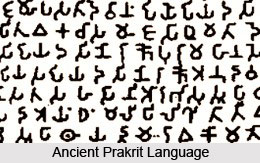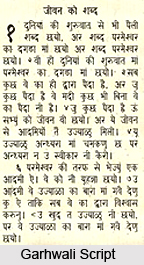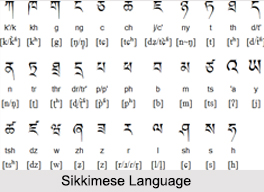 Origin of Sanskrit Language reveals that it is a member of the Indo-Iranian sub-family of the Indo-European family of languages. In the second millennium B.C Indo-European tribes had occupied some areas in Iran, Asia Minor and north-west India. On linguistic grounds the speech of Aryan group can be regarded as the precursor of the speeches of India and Iran. The oldest evidence of use of Indian Language is the Rig-Veda. The language used was formal and conventional.
Origin of Sanskrit Language reveals that it is a member of the Indo-Iranian sub-family of the Indo-European family of languages. In the second millennium B.C Indo-European tribes had occupied some areas in Iran, Asia Minor and north-west India. On linguistic grounds the speech of Aryan group can be regarded as the precursor of the speeches of India and Iran. The oldest evidence of use of Indian Language is the Rig-Veda. The language used was formal and conventional.
The speech of the Rig-Veda shows dialectic mixture. Borrowings from other dialects can be asserted. From the language used in Rig-Veda one can trace a steady development to Classical Sanskrit through Samhitas and the Brahmanas. In India the evolution of language was emphasized by the notable achievements of early Indian grammarians whose analytical skill was incomparable. As far as normal life is concerned their language witnessed constant destruction and reconstruction. Sanskrit grammarians accepted and carried even beyond than done by the contemporary vernaculars. The process of the removing irregularities and the disuse of variant forms were faster in Sanskrit. However, new formations were not allowed thereby producing a form ordered and purified expression.
The religion`s role in preserving speech accuracy is shown by the existence of a special form of sacrifice. The authority of the grammarians, whose results were summarized in Panini`s Ashtadayai in the fourth century B.C., is visible in the scheme of euphonic combination of the words within the sentence or verses. Rigidity is also seen in the process which substitutes in many cases y and v for the iy and uv. One can trace the dialectic influence in the recognition of l in many words in lieu of r. There is a certain distinction between the dialect which underlies the Rig-Veda and that of Panini. The chief score of progress is the growth of the tendency to intellectualism probably under influence of the Dravidians.
In syllable structure double forms were eliminated for example a as a variant for ena in, a and a yielded to au in the dual, the effective distinction of root and derivative in I disappears. In the same manner in verbal forms the variant masi in the first plural active is kept aside, the e of the third singular leads to te, dkva in the second plural to dhvant. The wealth of forms is seriously reduced.
Despite some of these losses Sanskrit keeps pace with popular speech. Categories such as the dual of noun and verb alike, the middle, and the past tenses vanished from popular speech, however, Sanskrit language rigidly retains them. It rejects irregularities which popular speech had permitted to survive. For example the a of the instrumental singular and nominative plural neuter of a stems, the asas of the masculine plural, the from gonam, the pronominal plurals asme and yustne, the short forms yat and tat, and verbal forms in r.
Traces of the subjunctive and the infinitive are banned in Sanskrit. However it can be considered that Classical Sanskrit is an artificial creation, a product of the Brahmins when they wanted to counteract the Buddhist creation of Pali literature. There has been a steady progress through the later Samhitas, the Brahmanas, and the Aranyakas and Upanishads. The spoken language of Panini`s grammar is related to the language of the Brahmanas and the older Upanishads. Classical Sanskrit does not present any artificial symmetry rather admitting exceptions in confusing abundance. This also shows that the grammarians were not creators instead they were engaged in a serious struggle to bring into shape a slightly unyielding material.



















